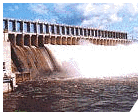

 |
 |
||||||
|
This is an excellent textbook for senior designers in Civil Engineering, Water Resources, Hydraulic and Hydrologic Engineering, and a useful technical reference for water-related projects in Public Works and Urban Infrastructure. |
Title: Urban Channel Design and Flow Analysis Price: US $95 Examples are presented with calculation details and procedures using EXCEL Spread Sheet Approach. From the TABLE OF CONTENTS |
This book presents urban channel design to include not only the protocols for hydraulic procedure, but also concerns for public safety, esthetics such as greenbelt and parks, and by incorporating economic consideration between costs and benefits. It also presents new concepts to design urban channels with considerations of multiple land uses and multiple design events. Urban channels shall be blended into urban greenbelts and parks for the purposes of recreations and sports. On top of theories and concepts, numerous practical design examples are presented using a systematic approach to integrate multiple purposes to design the waterway and its floodplains.
This book also applies the green concept to urban channel designs. All channels to be designed with considerations of wetlands, greenbelts, water-front parks, and recreational open space with bike paths and sport fields. All hydraulic structures across the floodplain need to achieve the hydraulic goals, and also to accommodate recreational purposes such as rafting, kayaking, and wild life habitats. As always, urban channel shall be designed to be the assets to better the urban life, and as the major infrastructure to improves the quality of water environment.
|
FOREWORD
|
CHAPTER 6 - GRASS CHANNEL |
© Copyright 2021. Water Resource Publications, LLC. All
rights reserved.
Colorado, USATelephone: 720-873-0171 / Fax: 720-873-0173
E-mail:
